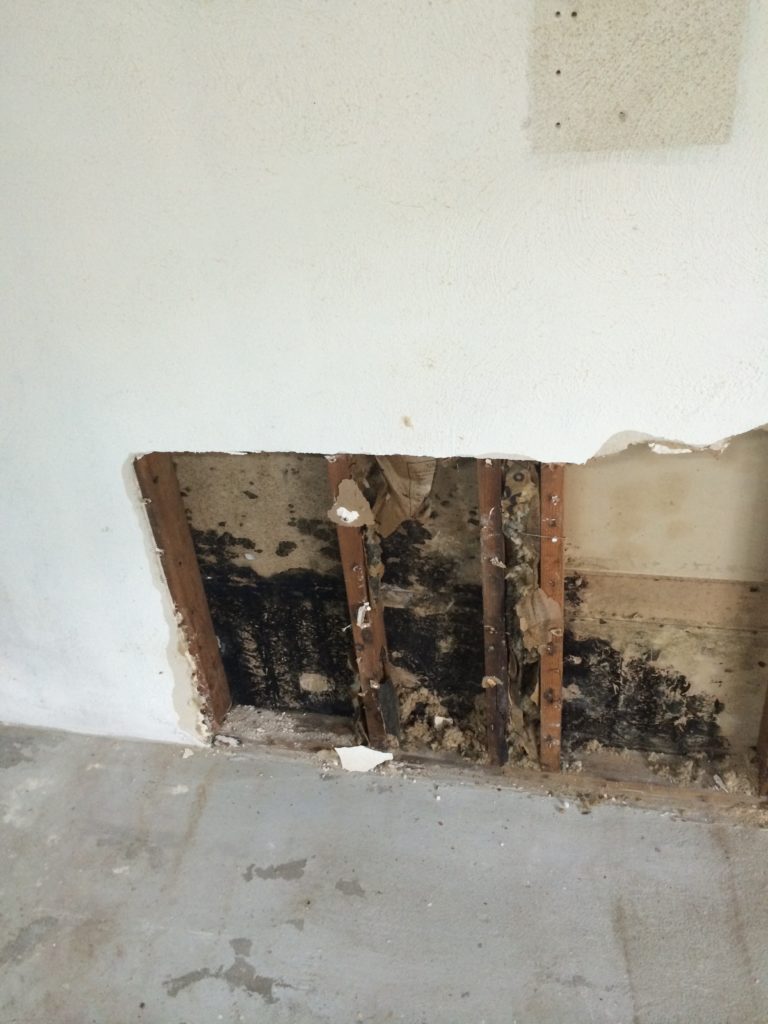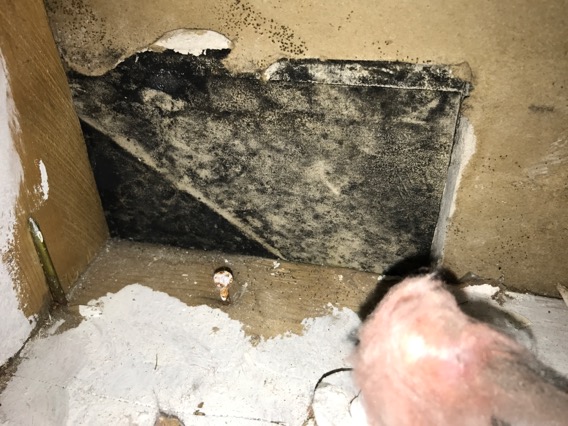Often referred to as “black mold,” Stachybotrys is a highly toxic form of indoor mold which grows and thrives in moist conditions. This is alarming because, according to the National Center for Biotechnology Information, “The prevalence of indoor dampness varies widely within and among countries, continents and climate zones. It is estimated to affect 10–50% of indoor environments in North America. In certain settings, such as river valleys and coastal areas, the conditions of dampness are substantially more severe than the national average.” This means that anywhere between 12 million and 61.5 million households in North America have conditions perfect for black mold. Is your family at risk?
Quick Facts about Stachybotrys
Where there are moisture and a high-cellulose surface, there could be black mold! Cellulose is found in any building materials derived from plants, including paper, drywall (as it is coated with paper), and fiberboard. Stachybotrys will continue to reproduce and spread as long as it has these things. It is especially hazardous because it produces deadly mycotoxins.
Recognizing Stachybotrys

As a gelatinous mold, Stachybotrys tend to have a slimy and slippery texture when wet. Should the water source for existing mold dry up, Stachybotrys may appear dry and fuzzy. Although its nickname (black mold) implies its color is black, this is only a partial truth. In fact, “black” mold can vary from green to greenish-black to black. Because other molds can look similar to Stachybotrys, it’s essential to have your mold tested. Knowing whether or not you have had black mold exposure or regular contact with any other type of mold is crucial information for you and your doctor to have.
Locating Stachybotrys
In some cases, the presence of black mold will be obvious. If it has grown on the ceiling above your bathtub or the floor of your shower, for instance, you’ll notice it during your routine activities. But mold can pop up in many places that you wouldn’t think to look at on a daily basis. So if you have health concerns and suspect that black mold could be a culprit, we recommend checking:
• Under sink cabinets – Very slow drips or condensation from pipes hidden away under kitchen and bathroom cabinets could create the perfect place for Stachybotrys to take up residence.
• Around basement pipes – Check and clean around basement pipes regularly to ensure excess moisture doesn’t build up and allow for the growth of mold.
• Windowsills – Stachybotrys and other types of mold love windowsills! When there’s a difference in temperature between the outside of your home and the inside of your home, moisture and condensation can accumulate.
Recognizing the First Health Symptoms of Toxic Stachybotrys
Sometimes, the first sign of black mold in a home is a sudden onset of health conditions or illnesses. Be on the lookout for these Stachybotrys symptoms. If any of these appear, it’s important to immediately test your home for mold.
Stachybotrys Symptoms:
• Chronic Coughing
• Postnasal Drip
• Excessive Sneezing
• Itchy Eyes, Nose, or Throat
• Chronic Congestion
• Aggravated Asthma Symptoms
• Shortness of Breath
• Chest Tightness
Long-term Health Impacts of Stachybotrys
If black mold continues to go undetected in the home, it could lead to serious health outcomes. This is why early detection and mitigation are so crucial. Some of the long-term impacts include:
Long-Term Impacts of Stachybotrys:

- Suppressed Immune System
- Chronic Respiratory Problems
- Nausea
- Fatigue
- Hemorrhage
- Organ Damage
- Mental Impairment
- Dementia
Testing for Stachybotrys
Keeping an eye on high-moisture areas is important, and we always recommend checking for mold on a regular basis, but sometimes it just can’t be detected. We’ve encountered countless people who have been struggling with poor health and noticing a strange, mildewy, or musky smell in their homes but haven’t been able to locate anything that looked like Stachybotrys or other types of harmful molds. This is why having your home professionally tested for mold is so critical. Here are a few crucial reasons for testing:
• Detect Earlier – Having a professional evaluate your home for the presence of mold will help you to detect Stachybotrys earlier, reducing the chances that its mycotoxins will have the opportunity to cause severe or lasting damage to the health of you and your family.
• Understand Underlying Health Conditions – If you or anyone in your household have been struggling with unusual or chronic health conditions, it’s important to figure out what’s causing the problem. By discovering the presence of black mold, you can provide that information to your doctor. This will give them clues about what tests to run for diagnostics and how to treat you so that you can be restored to total health.
• Protect Your Home – In addition to posing serious health risks, Stachybotrys and other types of mold can wreak havoc on your home, causing tons of interior damage that, left undetected and untreated, will diminish your home’s value.
Take Action Against Stachybotrys
As a homeowner, the smartest thing you can do is to be proactive about mold. Do everything in your power to protect your household from Stachybotrys and other types of mold. Here are a few actions you can take:
• Keep Moisture at a Minimum -Install leak detectors, bathroom ventilation fans, and laundry room fans, and take time to thoroughly dry wet surfaces.
• Have a Professional Evaluate Your Home – Hire a mold-detection professional to complete a thorough evaluation of your home for the presence of black mold or other pollutants that could be negatively impacting your health. Make sure your contractor is able to test any mold detected so that you understand what you are up against.
• Do a Virtual Walkthrough – If you live in a remote area or prefer not to let others into your home, you can elect to perform a guided, virtual walkthrough with the help of a mold detection specialist. We’ll send you all the tools you need, will explain how to use them, and will virtually inspect the home with you.
Are you ready to take action against Stachybotrys, mold, and indoor pollutants? Schedule an appointment with Indoor Doctor today!




